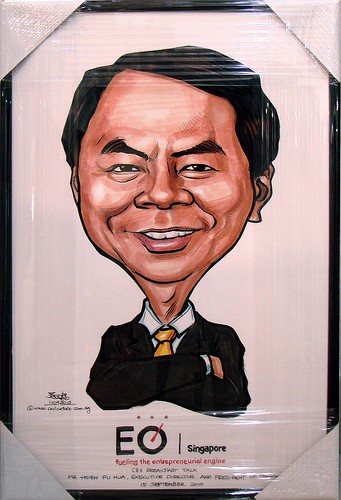Shanghai Futures Exchange MarketsWiki A Commonwealth of Market Knowledge
Post on: 25 Май, 2015 No Comment

Website
The Shanghai Futures Exchange (SHFE ) is one of the largest commodities markets in China. The exchange lists contracts in steel, copper, aluminum, natural rubber, fuel oil, zinc and gold. [1]
The exchange was ranked 13th among world derivatives exchange by the Futures Industry Association in 2012, with total volume of 365.3 million contracts, up 18.5 percent from a year earlier, when the exchange posted 308 million contracts. The exchange’s volume ranking rose from 14th to 13th in 2012, according the annual volume survey from FIA. [2]
SHFE plans to be the first Chinese exchange to open futures trading to non-Chinese participants. In October 2012, Chinese regulators announced that qualified overseas investors would be allowed to trade the SHFE’s crude oil futures contract. [3] As of 2013, the commodity futures market was still off-limits for foreign investors. [4] The exchange set up the International Energy Trading Center in the city’s pilot free-trade zone (FTZ) in November 2013 as a platform to operate its energy futures trading, including the crude oil futures. [5]
History
The SHFE was formed in 1998 as part of the restructuring of China’s futures industry, which was revived in 1990 after a 60-year hiatus, but saw the government close many of the 40-plus exchanges which emerged because of widespread price manipulation.
The Shanghai Futures Exchange was formed from the merger of the Shanghai Metal Exchange, Shanghai Cereals and Oil Exchange and Shanghai Commodity Exchange. It is one of three surviving entities alongside the the Zhengzhou Commodity Exchange and the Dalian Commodity Exchange. though a Shanghai-based financial derivatives exchange is being developed.
The Shanghai Futures Exchange was ranked the world’s 14th largest derivative exchange by volume in 2011, down from 11th in 2010 and 10th in 2009. In 2011, it was second to the Zhengzhou Commodity Exchange. which ranked 11th globally, according to the annual Futures Industry Association ‘s survey of the world’s leading derivatives exchanges. [6]
In October 2013, Singapore Exchange (SGX) inked a memorandum of understanding (MoU) with the Shanghai Futures Exchange. The two exchanges will jointly explore cooperation in the development of derivatives for energy, metal, chemical and commodity indexes. [7]
Product Development
Trading started in May 1999, with futures in copper, aluminum and rubber, and the SHFE is now the premier metals exchange in Asia, competing with the London Metal Exchange. and offering benchmarks including aluminum and copper. However, its natural rubber contract has been the most heavily-traded in China in notional value terms since 2006, followed by its copper futures, whose volume tripled from 2006 to 2007.
A fuel oil future was added on Aug. 24, 2004, and the SHFE has been one of the most active campaigners for regulators to approve new commodity and financial products. While it has long sought to launch steel futures – despite industry resistance – it launched a zinc future on March 22, 2007, and received approval to start a SHFE gold futures contract — launched on Jan. 9, 2008, [8] It launched night trades in gold and silver futures on May 2012. [9] Nickel, lead, crude oil, liquefied natural gas and coal have also been identified by exchange officials as areas of potential expansion. [10] The SHFE launched lead futures on March 24, 2011. [11] SHFE is also plan to launch crude oil futures trading during the periods of 2013 and 2014. The exchange expects the preparations to list crude oil futures to be accomplished by the end of 2013. [12]

SHFE moved up from third in 2008, accounting for 36 percent of the total volume of all futures contracts traded in China, up from 21 percent in 2008, while in terms of notional value. its market share remained the largest, with 55 percent of the total turnover, up from 40 percent in 2008.
The rubber contract accounted for 44 percent of total exchange turnover in 2006, 38 percent in 2007, and 32 percent in 2008, but the electronic exchange unveiled a new product innovation strategy focused on expansion in metals, energy and chemicals and received approval in 2007 to launch futures in gold, rapeseed oil and low-density polyethylene. However, in 2011, for agricultural futures markets, rubber futures trading was down 37.7% at Shanghai Futures Exchange. [13]
The SHFE also launched a steel wire rod futures contracts in March 2009. [14] [15]
Following the official launch on March 27, 2009 one of the two types, SHFE steel rebar futures and steel wire rod futures, quickly developed into actively traded steel contracts. In 2009, SHFE reported that 32,314,9042 rebar futures contracts and 2,184,032 wire rod futures were traded on the exchange in the first nine months. [16]
In June 2014, The Financial Times reported that the exchange was planning to launch China’s first nickel and tin futures contracts that year.
Structure and Regulation
All contracts are settled by physical delivery. Trading hours are from 9 a.m. 11:30 a.m. and 1:30 p.m. to 3 p.m. From December 20, 2013, SHFE extends the trading hours for industrial medals to night session from 9 p.m. to 1 a.m. The SHFE is a self-regulated, non-profit organization, overseen by the China Securities Regulatory Commission. with 219 members, including 183 brokerage firms. It also hosts more than 250 distant terminals.














